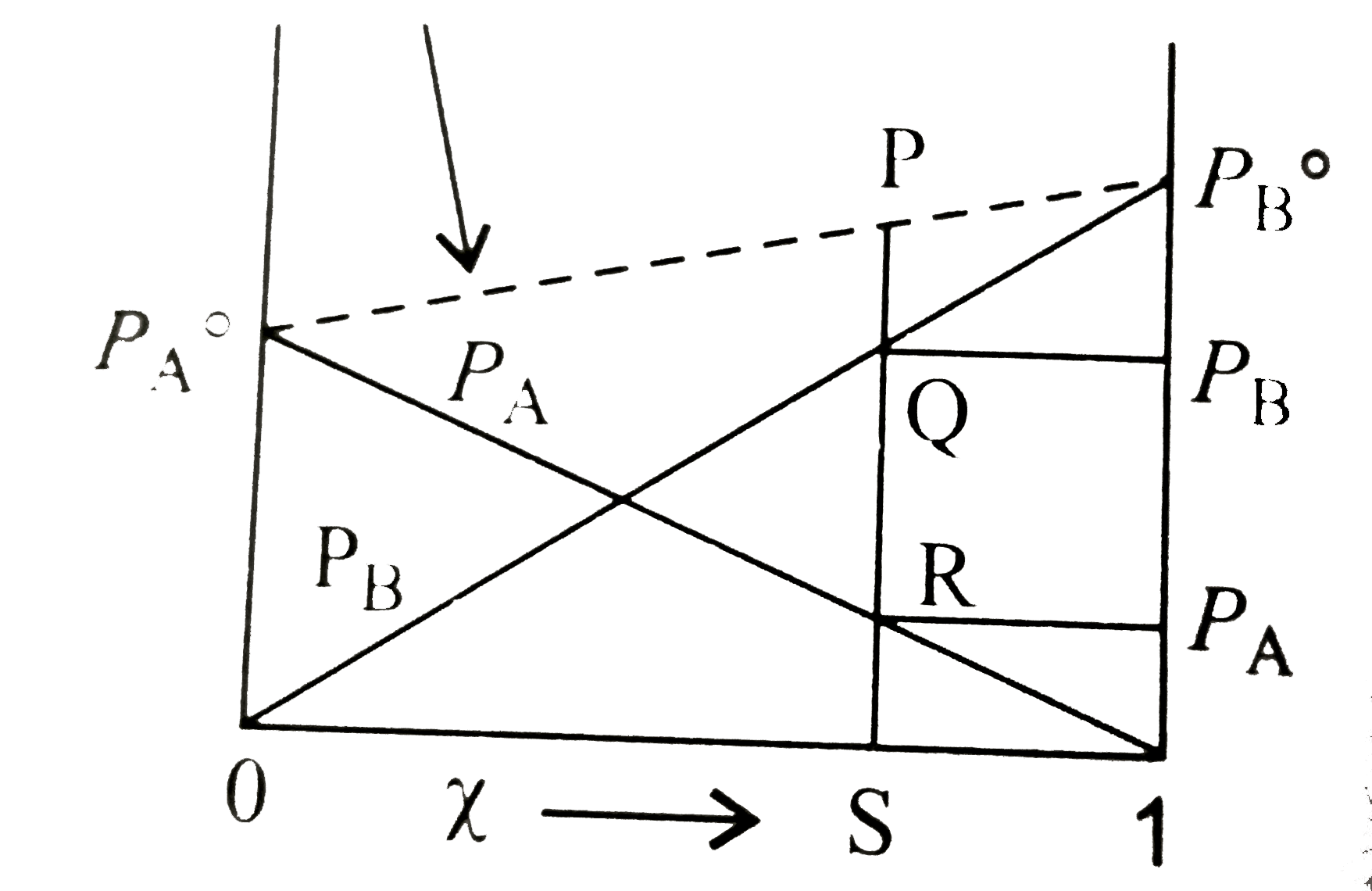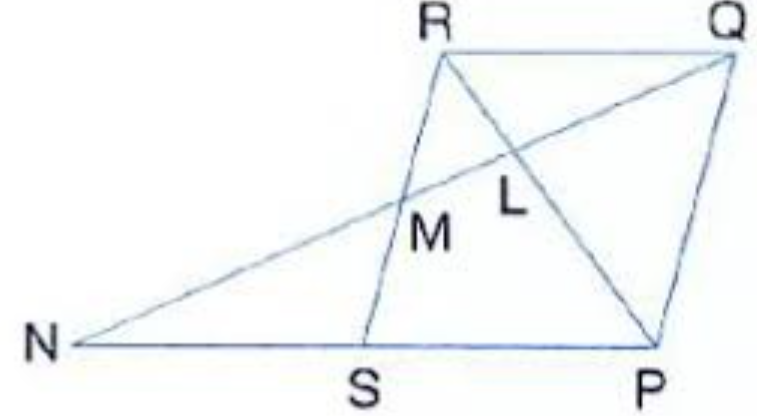Consider the follwing vapour pressure composition graph. SP is equal to:
a. PQ+RSm , b. PQ+QR , c. SR+SQ , d. PQ + QR + RS

c. According to Dalton's rule: Total pressure of a gaseous solution is equal to the sum of partial pressure.
∴Ptotal=PA+PB
=SR+SQ
Topper's Solved these Questions
- SOLUTIONSBOOK - CENGAGE CHEMISTRY ENGLISHCHAPTER - SOLUTIONSEXERCISE - Solved Examples
40 Videos
- SOLUTIONSBOOK - CENGAGE CHEMISTRY ENGLISHCHAPTER - SOLUTIONSEXERCISE - Exercises (Linked Comprehension)
58 Videos
- SOLID STATEBOOK - CENGAGE CHEMISTRY ENGLISHCHAPTER - SOLID STATEEXERCISE - Ex 1.2 (Objective)
9 Videos
- SURFACE CHEMISTRYBOOK - CENGAGE CHEMISTRY ENGLISHCHAPTER - SURFACE CHEMISTRYEXERCISE - Archives Subjective
2 Videos
Similar Questions
If PQR ≅EFD, then ED= PQ (b) QR (c) PR (d) None of these
View SolutionIn the figure, PSDA is a parallelogram. Points Q and R are taken on PS such that PQ=QR=RS and PA||QB||RC. Prove that ar(PQE)=ar(CFD).

View SolutionA and B are respectively the points on the sides PQ and PR of a ΔPQR such that PQ =12.5 cm, PA= 5 cm, BR = 6 cm and PB = 4 cm. Is AB || QR? Give reason for your answer.
View SolutionSides AB and BC and median AD of a triangle ABC are respectively proportional to sides PQ and QR and median PM of ΔPQR. Show that ΔABC~ΔPQR.

View SolutionIn a triangle PQR, L and M are two points on the base QR, such that ∠LPQ=∠QRP and ∠RPM=∠RQP. Prove that:

PQ2=QR×QL
View SolutionIn the figure, PQRS is a parallelogram with PQ = 16 cm and QR = 10 cm. L is a point on PR such that RL:LP=2:3. QL produced meets RS at M and PS produced at N.
Find the lengths of PN and RM.

View SolutionIn ΔPQR,PQ=PR.A is a point in PQ and B is a point in PR , so that
QR = RA = AB = BP
show that :∠P:∠R=1:3
View SolutionIn given figure PQR is a right angled triangle, right angled at Q and QS⊥PR. If PQ=6 cm and PS=4cm, then find QS, RS and QR.

View SolutionP,Q,R,S are points ˆi−ˆj−ˆk,−ˆi+ˆj,2ˆi−3ˆkand3ˆi−2ˆj−ˆk respectivley. Show that the projectionof PQ on RS is equal to that of RS on PQ each being −43. Also find the cosine of their inclination.
View SolutionA long wire PQR is made by joining two wires PQ and QR of equal radii. PQ has length 4.8m and mass 0.06kg. QR has length 2.56m and mass 0.2kg. The wire PQR is under a tension of 80N. A sinusoidal wave-pulse of amplitude 3.5cm is sent along the wire PQ from end P. No power is dissipated during the propagation of the wave-pulse. Calculate,
(a) the time taken by the wave-pulse to reach the other end R of the wire, and
(b) the amplitude of the reflected and transmitted wave-pulse after the incident wave-pulse crosses the joint Q.
View Solution
